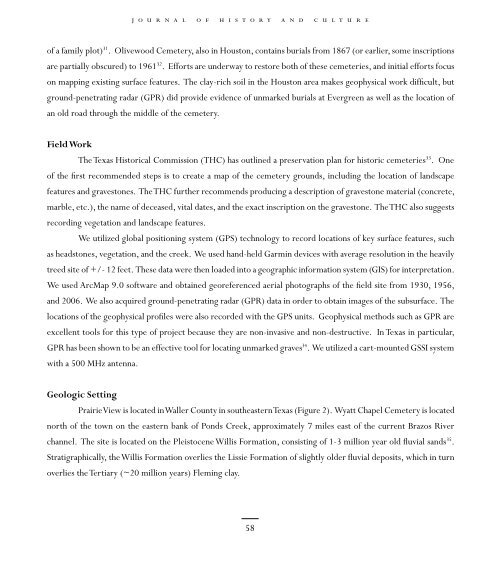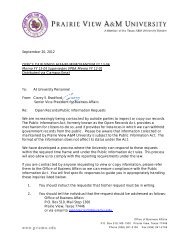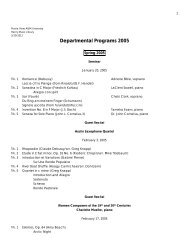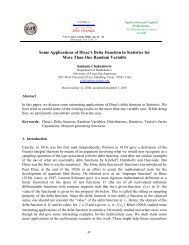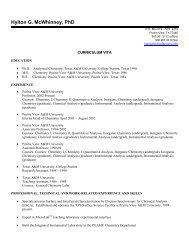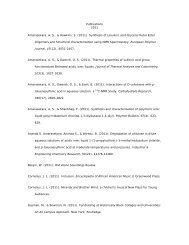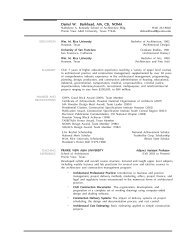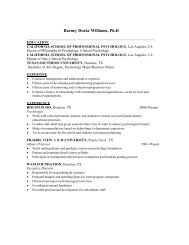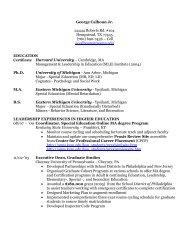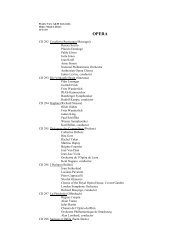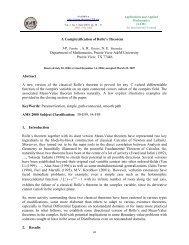Journal of History and Culture Journal of History and Culture
Journal of History and Culture Journal of History and Culture
Journal of History and Culture Journal of History and Culture
Create successful ePaper yourself
Turn your PDF publications into a flip-book with our unique Google optimized e-Paper software.
j o u r n a l o f h i s t o r y a n d c u l t u r e<br />
<strong>of</strong> a family plot) 31 . Olivewood Cemetery, also in Houston, contains burials from 1867 (or earlier, some inscriptions<br />
are partially obscured) to 1961 32 . Efforts are underway to restore both <strong>of</strong> these cemeteries, <strong>and</strong> initial efforts focus<br />
on mapping existing surface features. The clay-rich soil in the Houston area makes geophysical work difficult, but<br />
ground-penetrating radar (GPR) did provide evidence <strong>of</strong> unmarked burials at Evergreen as well as the location <strong>of</strong><br />
an old road through the middle <strong>of</strong> the cemetery.<br />
Field Work<br />
The Texas Historical Commission (THC) has outlined a preservation plan for historic cemeteries 33 . One<br />
<strong>of</strong> the first recommended steps is to create a map <strong>of</strong> the cemetery grounds, including the location <strong>of</strong> l<strong>and</strong>scape<br />
features <strong>and</strong> gravestones. The THC further recommends producing a description <strong>of</strong> gravestone material (concrete,<br />
marble, etc.), the name <strong>of</strong> deceased, vital dates, <strong>and</strong> the exact inscription on the gravestone. The THC also suggests<br />
recording vegetation <strong>and</strong> l<strong>and</strong>scape features.<br />
We utilized global positioning system (GPS) technology to record locations <strong>of</strong> key surface features, such<br />
as headstones, vegetation, <strong>and</strong> the creek. We used h<strong>and</strong>-held Garmin devices with average resolution in the heavily<br />
treed site <strong>of</strong> +/- 12 feet. These data were then loaded into a geographic information system (GIS) for interpretation.<br />
We used ArcMap 9.0 s<strong>of</strong>tware <strong>and</strong> obtained georeferenced aerial photographs <strong>of</strong> the field site from 1930, 1956,<br />
<strong>and</strong> 2006. We also acquired ground-penetrating radar (GPR) data in order to obtain images <strong>of</strong> the subsurface. The<br />
locations <strong>of</strong> the geophysical pr<strong>of</strong>iles were also recorded with the GPS units. Geophysical methods such as GPR are<br />
excellent tools for this type <strong>of</strong> project because they are non-invasive <strong>and</strong> non-destructive. In Texas in particular,<br />
GPR has been shown to be an effective tool for locating unmarked graves 34 . We utilized a cart-mounted GSSI system<br />
with a 500 MHz antenna.<br />
Geologic Setting<br />
Prairie View is located in Waller County in southeastern Texas (Figure 2). Wyatt Chapel Cemetery is located<br />
north <strong>of</strong> the town on the eastern bank <strong>of</strong> Ponds Creek, approximately 7 miles east <strong>of</strong> the current Brazos River<br />
channel. The site is located on the Pleistocene Willis Formation, consisting <strong>of</strong> 1-3 million year old fluvial s<strong>and</strong>s 35 .<br />
Stratigraphically, the Willis Formation overlies the Lissie Formation <strong>of</strong> slightly older fluvial deposits, which in turn<br />
overlies the Tertiary (~20 million years) Fleming clay.<br />
58


